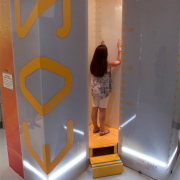Can the proximal humeral ossification system (PHOS) effectively guide brace weaning in patients with adolescent idiopathic scoliosis?
Every year, the Italian Scoliosis Study Group selects the best published papers on conservative spine treatment from the global scientific literature.
Here is the abstract from one of these papers.
Can the proximal humeral ossification system (PHOS) effectively guide brace weaning in patients with adolescent idiopathic scoliosis?
Prudence Wing Hang Cheung , Jason Pui Yin Cheung
Eur Spine J. 2023 Jun;32(6):2185-2195.doi: 10.1007/s00586-023-07693-6. Epub 2023 Apr 26.
Abstract
Purpose: The proximal humeral epiphyses can be conveniently viewed in routine spine radiographs. This study aimed to investigate whether the proximal humeral epiphyseal ossification system (PHOS) can be used to determine the timing of brace weaning in adolescent idiopathic scoliosis (AIS), as assessed by the rate of curve progression after brace weaning.
Methods: A total of 107 patients with AIS who had weaned brace-wear at Risser Stage ≥ 4, no bodily growth and post-menarche ≥ 2 years between 7/2014 and 2/2016 were studied. Increase in major curve Cobb angle > 5° between weaning and 2-year follow-up was considered curve progression. Skeletal maturity was assessed using the PHOS, distal radius and ulna (DRU) classification, Risser and Sanders staging. Curve progression rate per maturity grading at weaning was examined.
Results: After brace-wear weaning, 12.1% of the patients experienced curve progression. Curve progression rate for weaning at PHOS Stage 5 was 0% for curves < 40°, and 20.0% for curves ≥ 40°. No curve progression occurred when weaning at PHOS Stage 5 with radius grade of 10 for curves ≥ 40°. Factors associated with curve progression were: Months post-menarche (p = 0.021), weaning Cobb angle (p = 0.002), curves < 40° versus ≥ 40° (p = 0.009), radius (p = 0.006) and ulna (p = 0.025) grades, and Sanders stages (p = 0.025), but not PHOS stages (p = 0.454).
Conclusion: PHOS can be a useful maturity indicator for brace-wear weaning in AIS, with PHOS Stage 5 having no post-weaning curve progression in curves < 40°. For large curves ≥ 40°, PHOS Stage 5 is also effective in indicating the timing of weaning together with radius grade ≥ 10.
Keywords: Adolescent idiopathic scoliosis; Curve progression; PHOS; Proximal humerus ossification system; Skeletal maturity.





Leave a Reply
Want to join the discussion?Feel free to contribute!